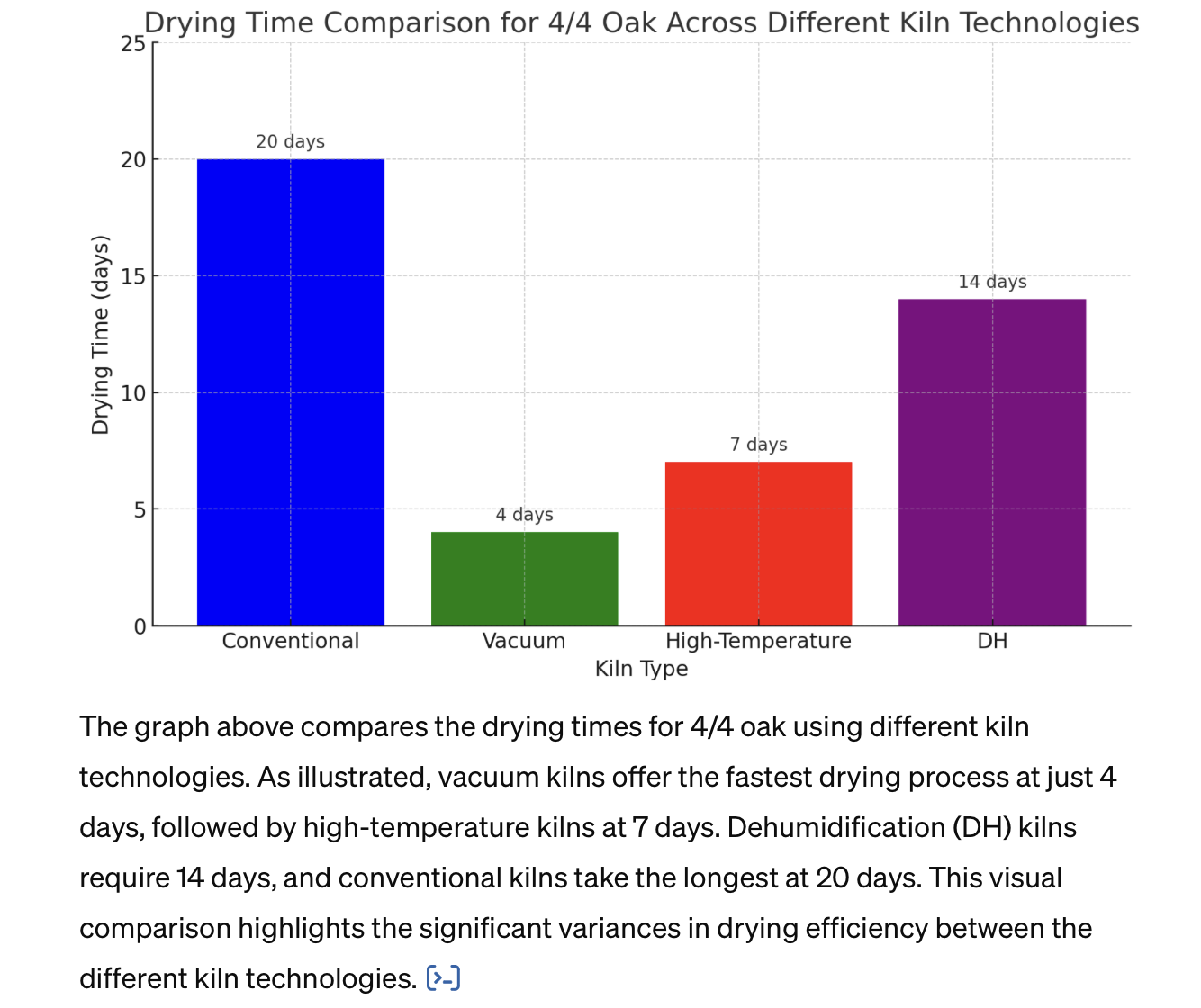

Global Energy Sales | Plans | Consulting TEL: 1-608-238-6001 Email: greg@globalmicroturbine.com
5000 BF Kiln for Lumber and Firewood Plans, parts, or full build using natural gas, propane, or wood heat via heat pipe or hot water... More Info
15000 BF Kiln for Lumber and Firewood Plans, parts, or full build using natural gas, propane, or wood heat via heat pipe or hot water... More Info

|
|
Exploring Lumber Dry Kiln Technologies: A Comprehensive Comparison The process of drying lumber is critical in woodworking and lumber production, significantly affecting the quality, stability, and usability of the wood. As technology advances, various lumber dry kiln technologies have been developed, each with its unique advantages and disadvantages. This article provides a comprehensive comparison of the main types of lumber dry kiln technologies: conventional kilns, vacuum kilns, high-temperature kilns, and dehumidification (DH) kilns, among others.Conventional KilnsConventional kilns, also known as steam kilns (legacy), have been the industry standard for decades. These kilns use steam, hot air from (water, steam, direct fired, or electrically heated) to heat the chamber and remove moisture from the wood. The process is gradual, allowing for uniform drying but can take weeks to complete. Conventional kilns are known for their reliability and the ability to dry large volumes of wood simultaneously. However, they consume a significant amount of energy and require a substantial initial investment.Vacuum KilnsVacuum kilns accelerate the drying process by reducing the air pressure around the wood, which lowers the boiling point of water and enables moisture to evaporate at lower temperatures. This method can drastically reduce drying times to days or even hours, making it ideal for high-value specialty woods. Vacuum kilns also minimize wood deformation and cracking, producing higher quality lumber. The downsides include higher costs and the complexity of operation.High-Temperature KilnsHigh-temperature kilns, sometimes referred to as superheated steam kilns, operate at temperatures much higher than conventional kilns. These kilns can dry wood much faster and are more energy-efficient. However, the high temperatures can be detrimental to certain types of wood, potentially leading to strength reduction and color changes. High-temperature kilns require careful monitoring to prevent damage to the lumber.Dehumidification (DH) KilnsDH kilns use a refrigeration system to condense moisture from the air inside the kiln, effectively removing water from the lumber. This method operates at lower temperatures compared to conventional kilns, reducing the risk of wood damage. DH kilns are energy-efficient, as the heat generated by the refrigeration process is reused to dry the wood. These kilns are suitable for small to medium-sized operations and can dry wood at a pace that minimizes defects.Other Kiln TechnologiesSolar kilns and radio frequency (RF) kilns are among the other technologies employed in lumber drying. Solar kilns harness the power of the sun, making them the most energy-efficient option, though their performance is heavily weather-dependent. RF kilns use electromagnetic waves to heat and dry wood from the inside out, significantly speeding up the drying process without causing surface cracking or other common defects.ConclusionSelecting the right lumber dry kiln technology depends on various factors, including the type of wood, the desired quality of the finished product, operational scale, and budget constraints. While conventional and high-temperature kilns are suited for large-scale operations requiring high throughput, vacuum and DH kilns offer higher quality drying with energy efficiency, ideal for smaller batches and specialty woods. Innovations like solar and RF kilns present promising alternatives for sustainable and efficient wood drying, albeit with their own set of limitations. |
| CONTACT TEL: 608-238-6001 Email: greg@globalmicroturbine.com | AMP | PDF |